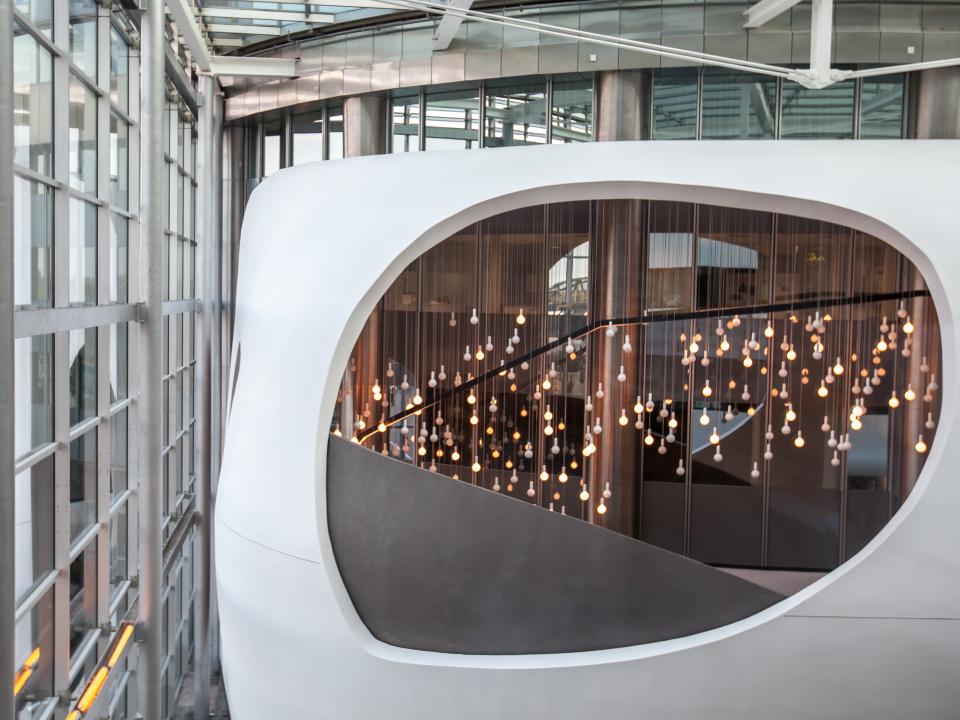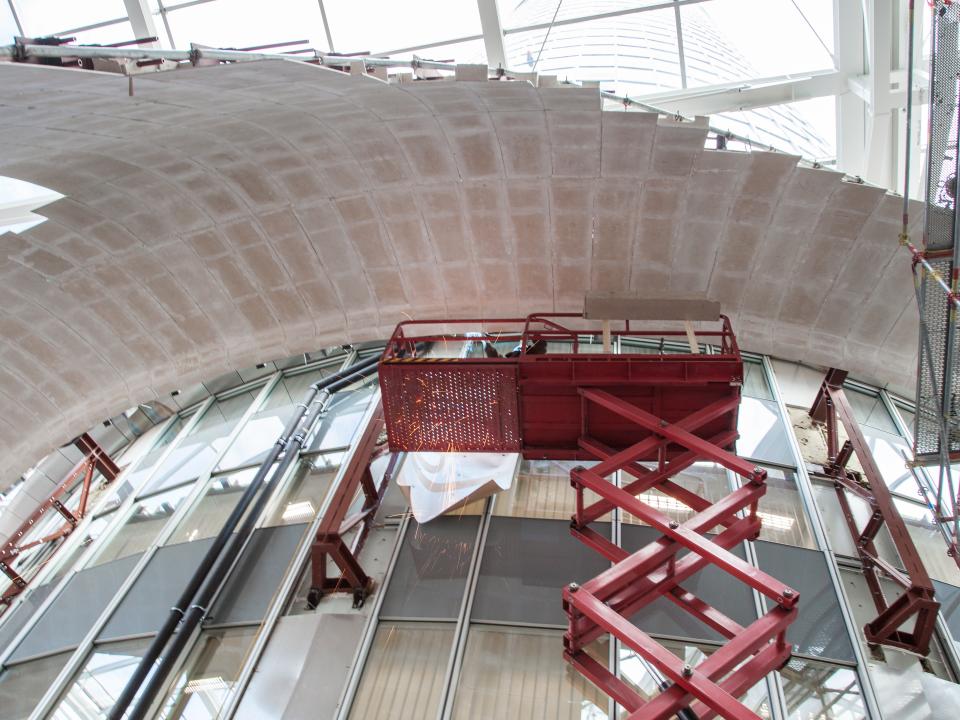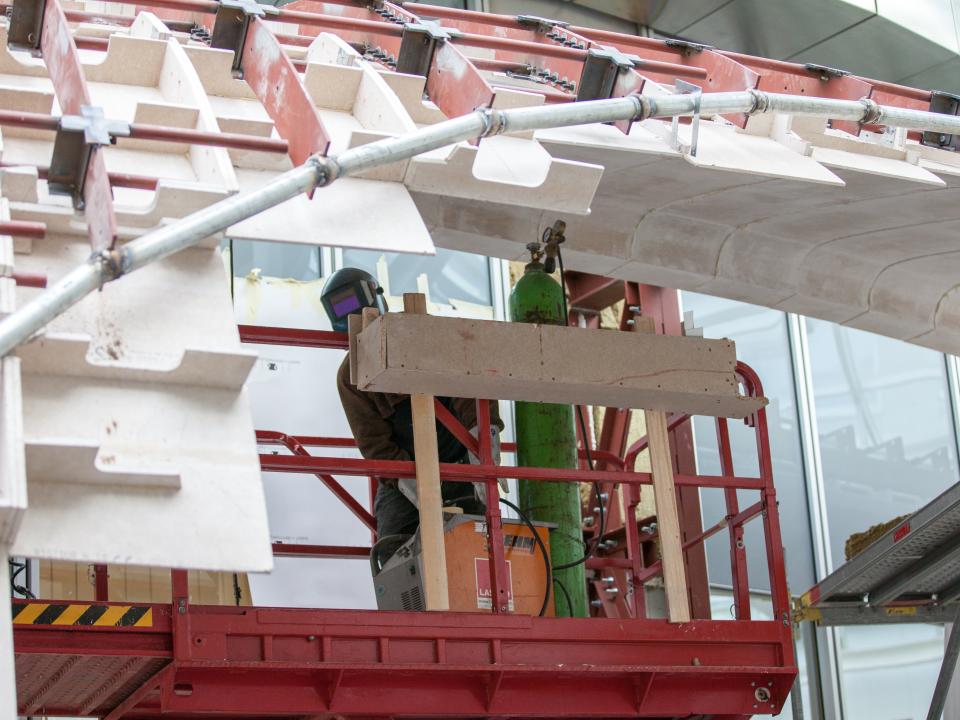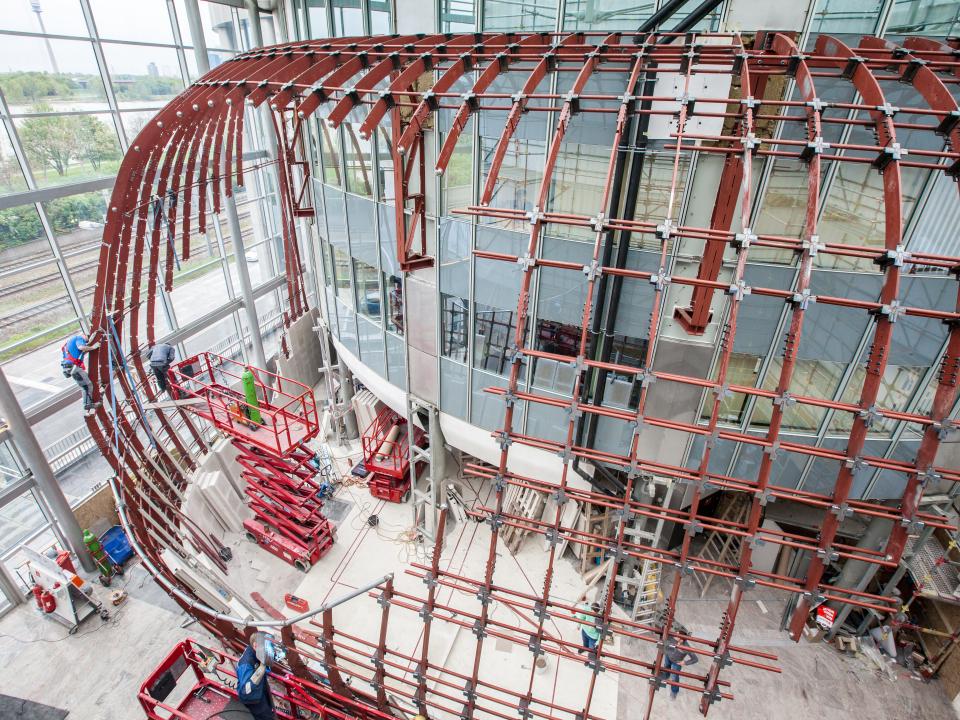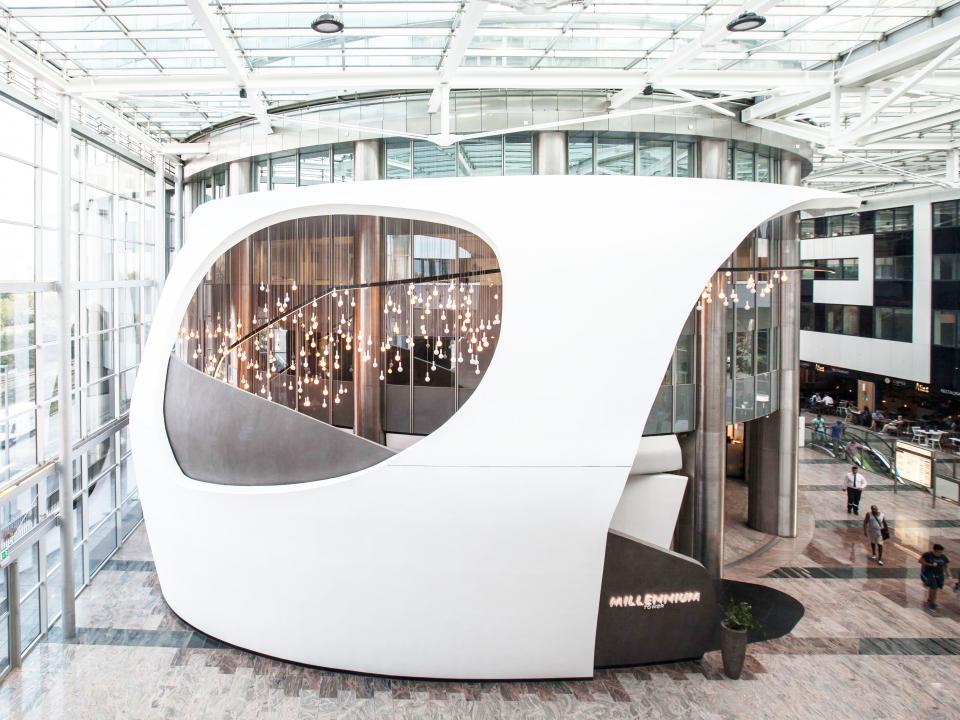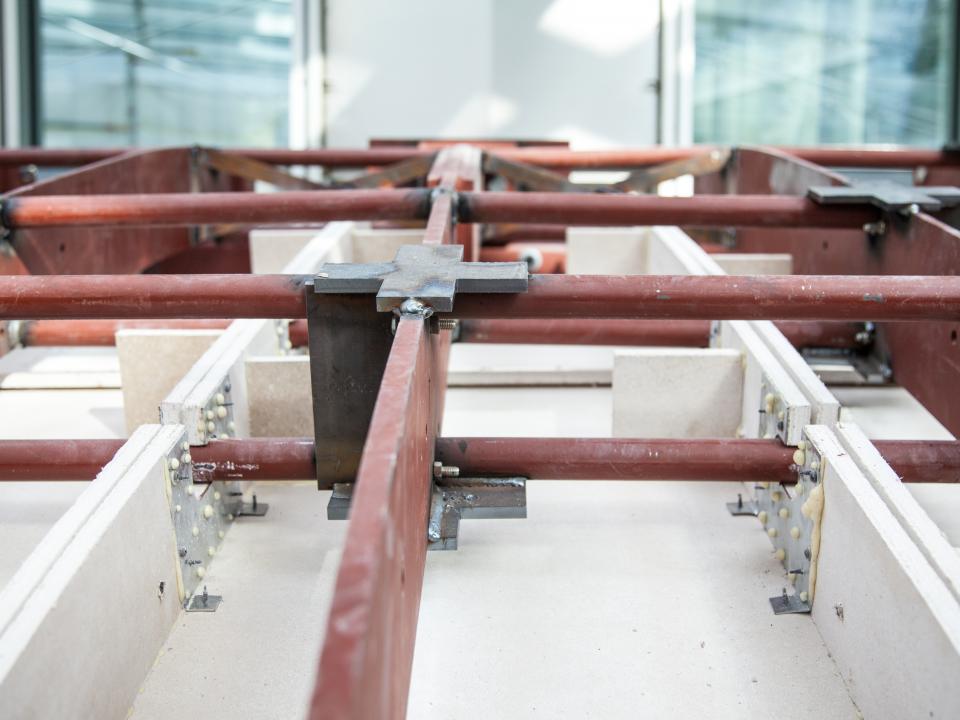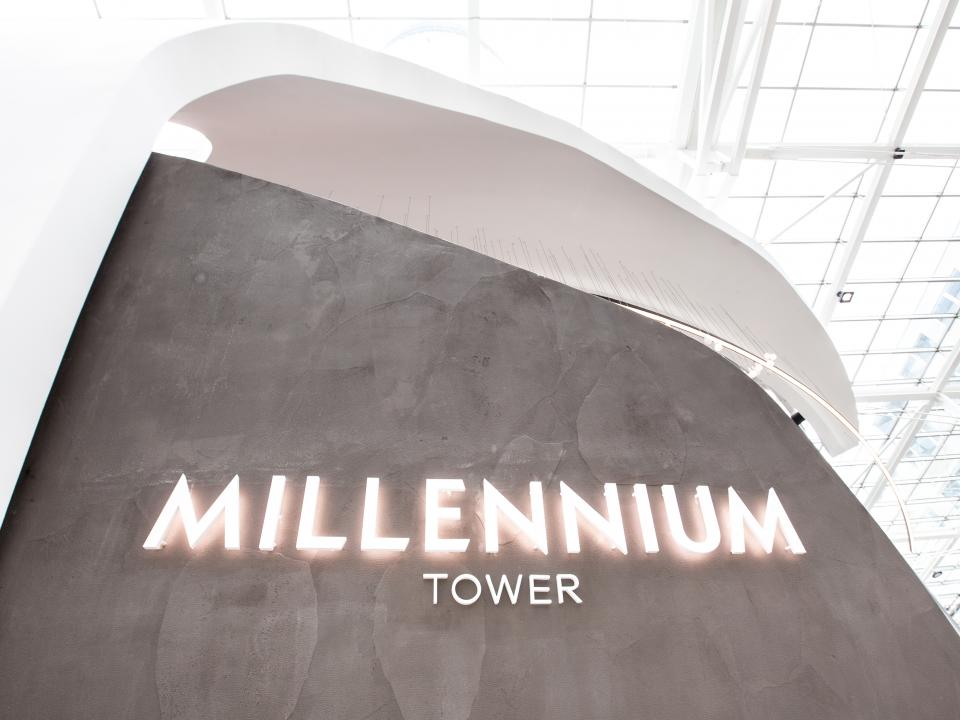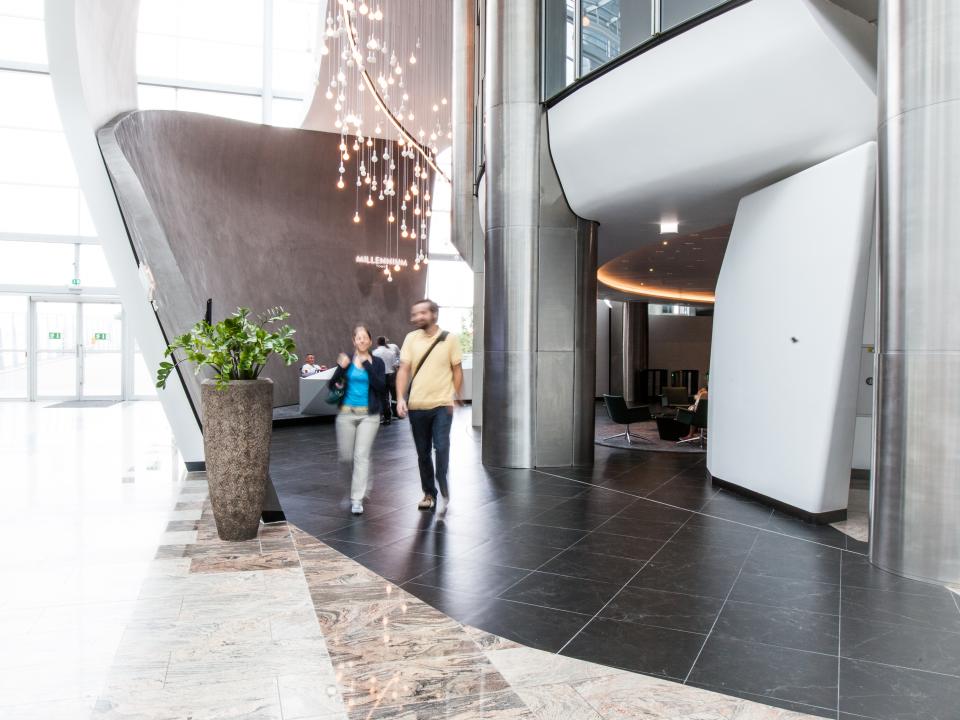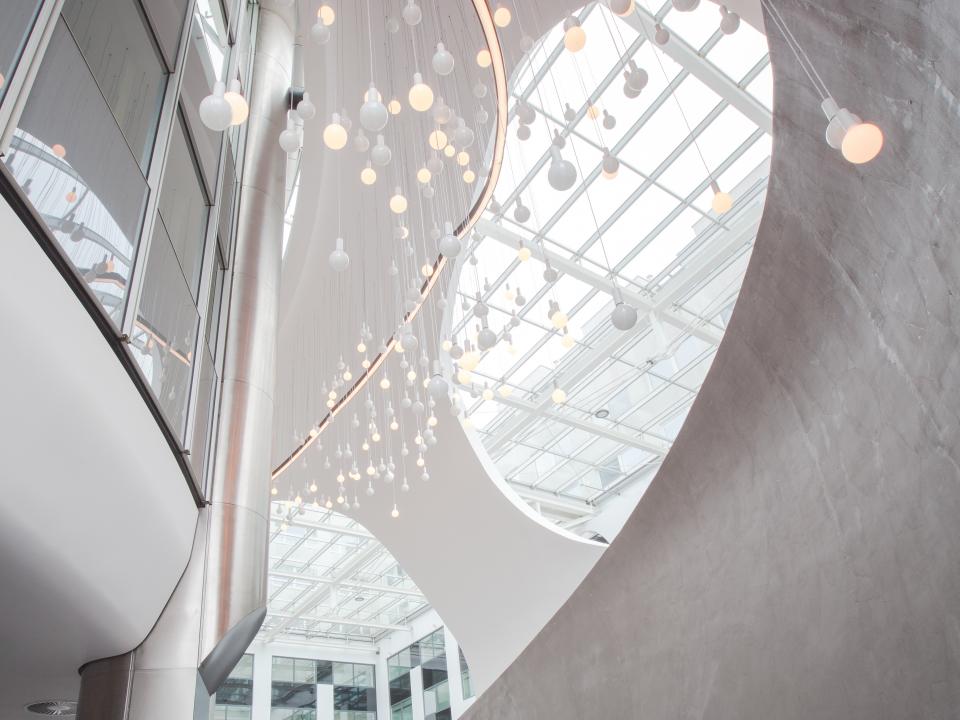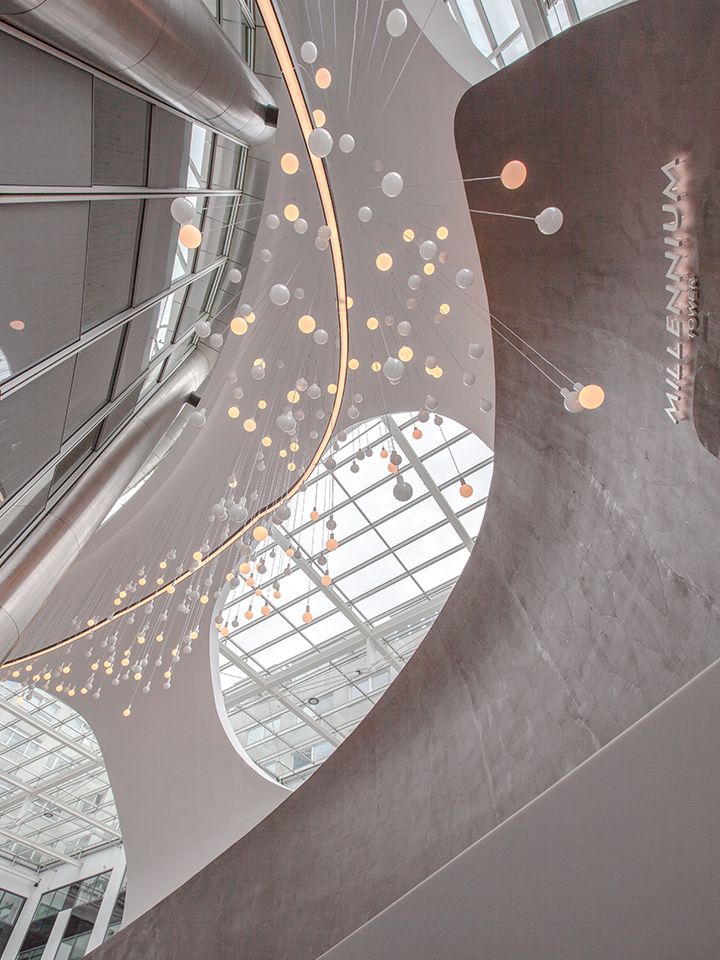Millennium Tower
Project description
The Millennium Tower is one of Vienna’s most striking high-rise buildings. The 200 metres tall office block is accessed via the shopping and entertainment centre at basement level. To clearly separate the entrance area from the adjacent hotel lobby an impressive shell structure consisting of two interlocking halves measuring 13 metres in height and 32 metres in diameter was installed. The installer was involved in the planning process from the start and was able to persuade the building owner to use gypsum fibreboards instead of the intended cement fibreboards. This resulted in a significant reduction of weight and enabled a lighter and leaner design. Gypsum fibreboards also made it possible to meet fire protection requirements without installing a sprinkler system. Precision engineering and craftsmanship enabled the implementation of the self-supporting and free-standing shell during ongoing operations and satisfy the strict demands regarding to the quality of the surface finish.
Contractor
Baierl & Demmelhuber Innenausbau GmbH
Founded in 1964 by the two carpenters Josef Baierl and Hans Demmelhuber, the family owned Bavarian company today employes over 500 employees. Reliability and loyalty, together with decades of experience guarantee a professional implementation – from planning to ready to move in handover. At Baierl & Demmelhuber you will find all the trades belonging to a complete interior design project under one roof. Since 2010 also based in Vienna-Meidling.
Key Achievements
- All of the materials delivered to the site (structure and cladding) had to be processed just in time as installation took place during normal operations and also because of the limited storage space of just 40 square metres.
- All of the radii and the convex and concave curves of the two shell halves were planned in great detail by the executing contractor – with regard to both the elaborate substructure and the cladding in the form of plasterboard mouldings.
- Pipe clamps and sylomer bearings attach the support structure to the building, with additional sylomer bearings securing it to the floor to absorb the movement of the more than 200 m tall tower and to prevent crack formation in the shells. These shock absorbers cushion the vibrations.
- More than 3,500 laser-cut flat steel elements were put together like a puzzle to create the steel structure. When fitting the substructure for the simultaneously and independently manufactured plaster/fibreboard mouldings a dimensional tolerance of 2 mm over the entire height must not be exceeded.
- The uppermost area of the shell had to be walkable to enable cleaning and maintenance work. Corrugated metal was incorporated in the plasterboard mouldings to achieve greater static strength.
- Preventing crack formation in the surface was a particular focal point of the design and, accordingly, a challenge during execution. It was guaranteed by using mouldings to clad the substructure. Thus, the approximately 800 m2 large structure makes do with just a single expansion joint.
- One of the greatest challenges was ensuring the surface remained free from sidelight despite different natural and artificial lighting conditions. It was achieved through numerous work processes involving lifting platforms and climbing equipment.
Key Challenges
A short construction period, the necessity to work during normal operations and a storage area inside the shell of just 40 square metres coupled with the corresponding demands on construction site logistics were the least of the challenges. The free-standing and self-supporting shell structure, its connection to the tower and also the connection between the dry lining structure and the supporting steel skeleton demanded significantly more competence with regard to planning and defining the right solution.
Creating a perfect surface was no less demanding. In fact, it was one of the greatest challenges due to the variety of different artificial light sources and incident light from the glazed roof. The convex and concave curves with different radii and not a single straight surface represented additional difficulties. Moreover, the top part of the outer shell had to be walkable to enable cleaning and maintenance work to be carried out.
